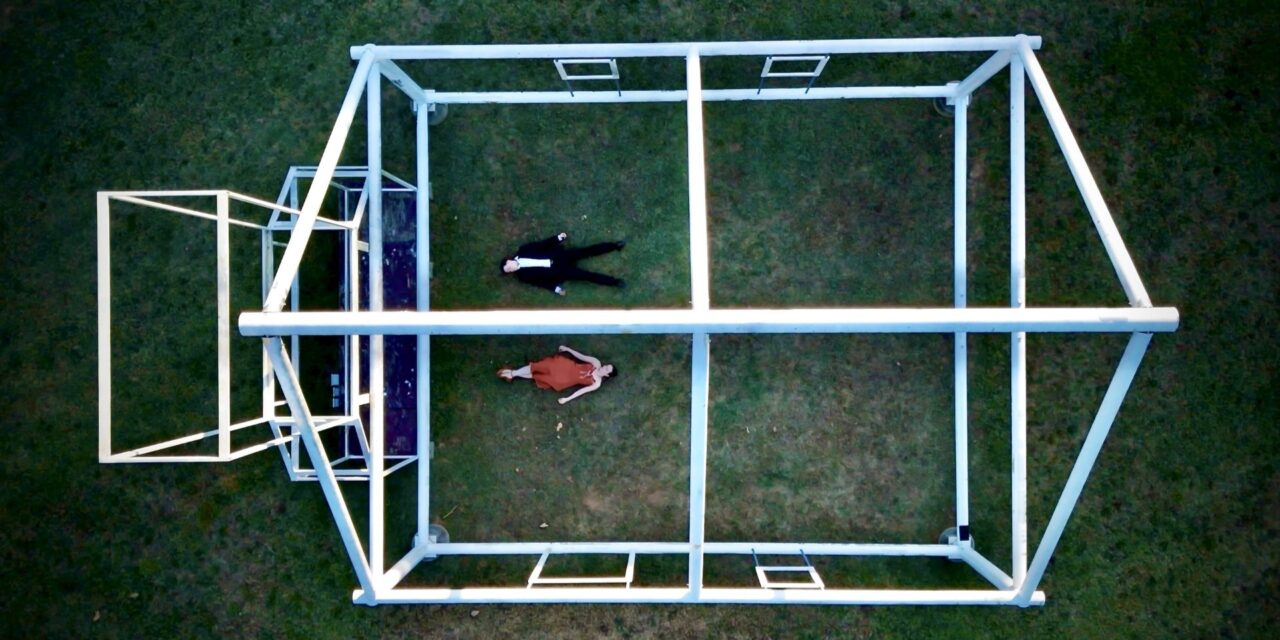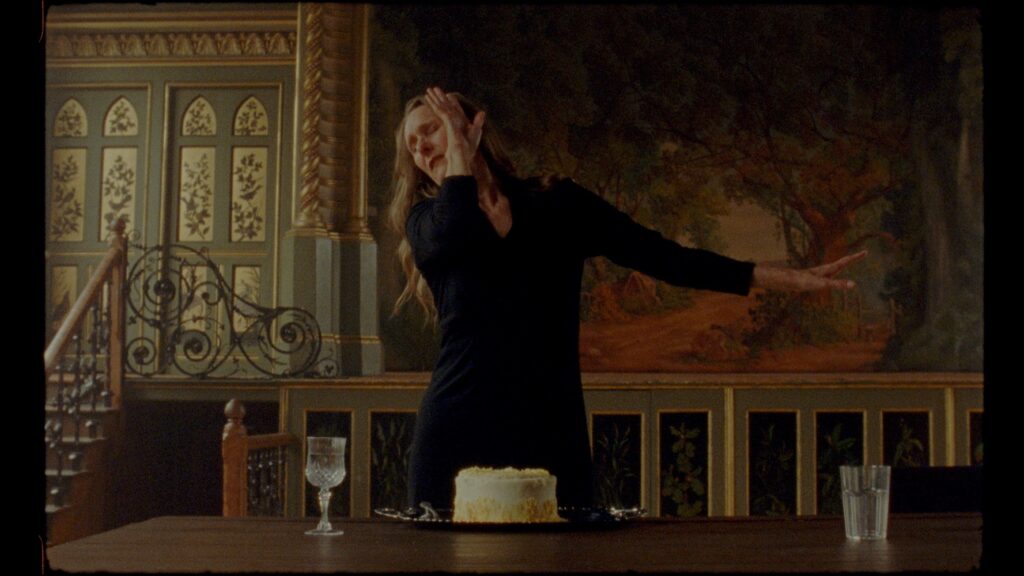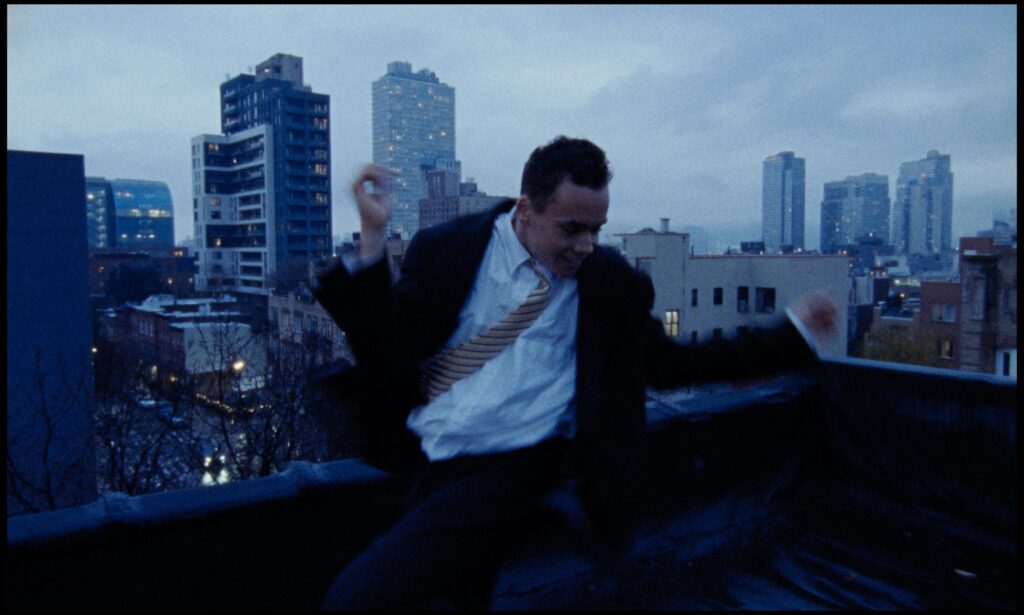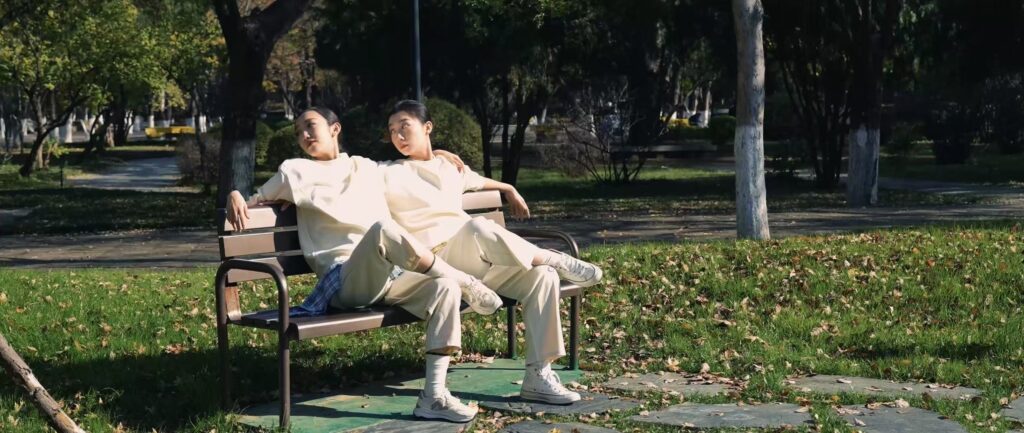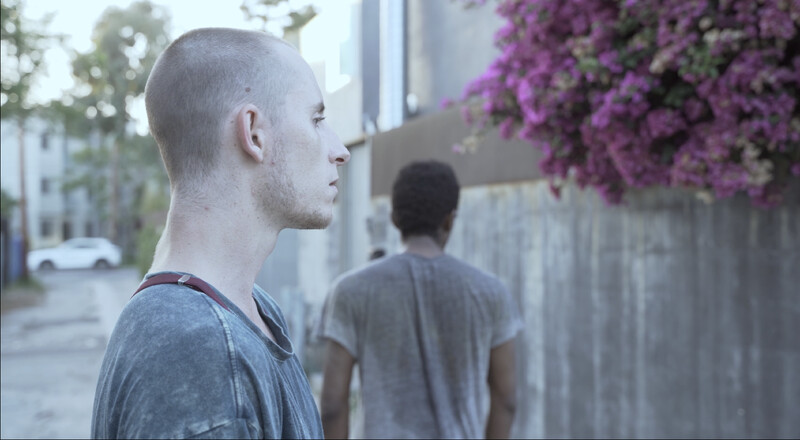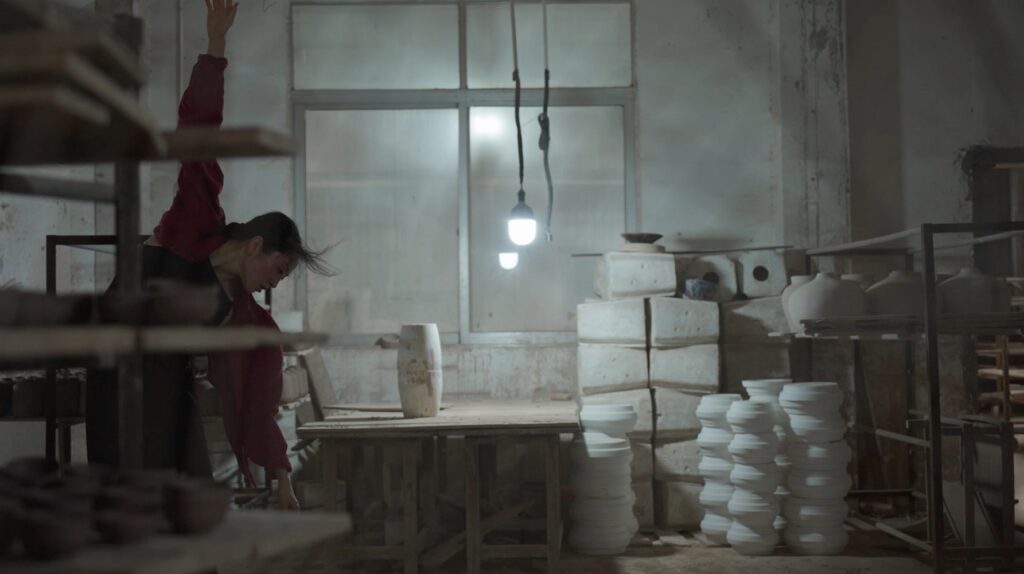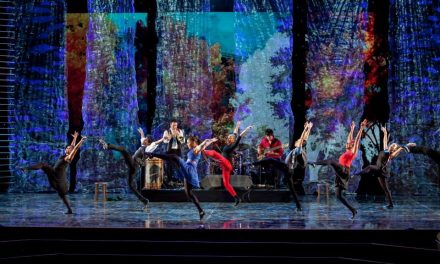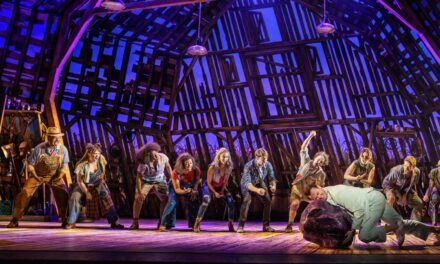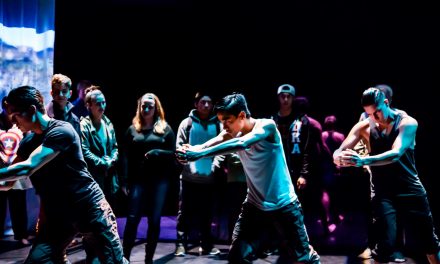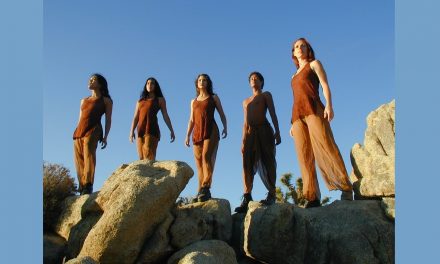From my seat in the Eastwood Performing Arts Center, the LA Dance Film Festival screening on August 2nd transported me around the world to scenic overlooks, into private spaces for intimate looks at the lives of others, and to roofs, palaces, subway platforms, and more. The curated evening of 15 films showed a great range in their cinematic choices, choreographic styles, and pacing. The screening started about an hour later than the listed start time of 7:30pm, and with the intermission for audience choice voting, awards, and a brief Q&A, the entire evening was on the long side.
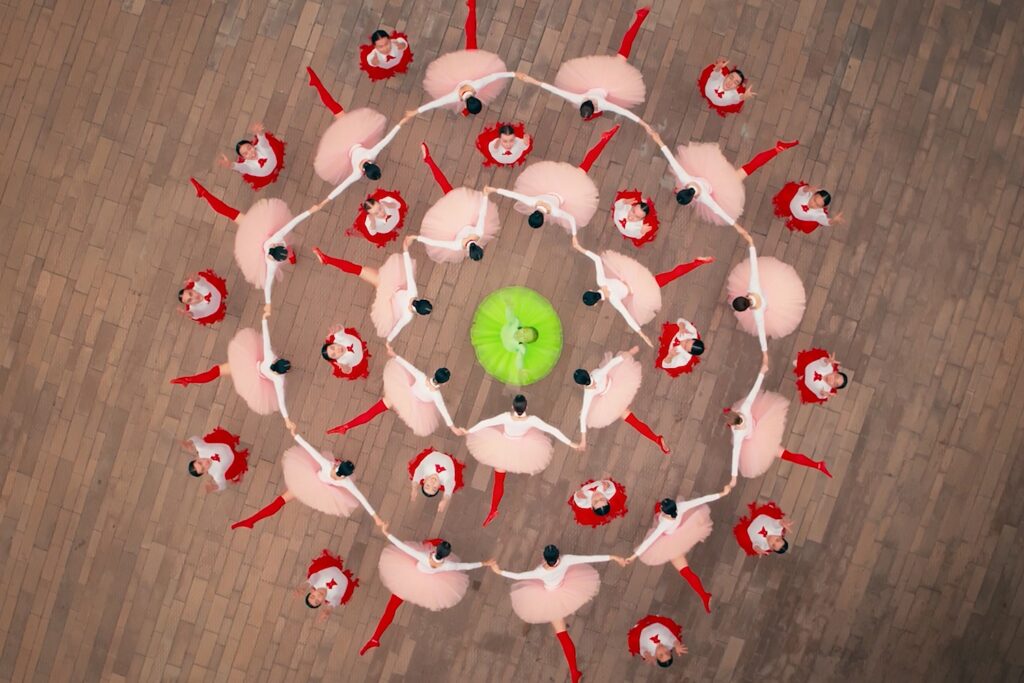
Hong Kong Ballet’s “Tutu Academy”, Directed by Dean Alexander, Choreographed by Septime Webre – Still courtesy of LA Dance Film Festival.
One of the most memorable films of the evening was Hong Kong Ballet’s “Tutu Academy,” directed by Dean Alexander and choreographed by Septime Webre. The film used over 50 dancers costumed in pink and red to create beautiful large scale visuals in grand palatial locations. The styling was as if the Queen of Hearts redecorated the Emerald City. Contrasting the pink and red, a green alien arrives on the scene wiggling in a way unfamiliar to the swarm of ballet dancers. They give him his own green tutu as he joins the dancing, and they all take to the streets, where the classical music is layered with hip hop beats and the dancing breaks free from the linear patterns of the classroom. This film was the winner of Standardvision’s Showcase Award and will be screened on loop at a DTLA digital billboard.
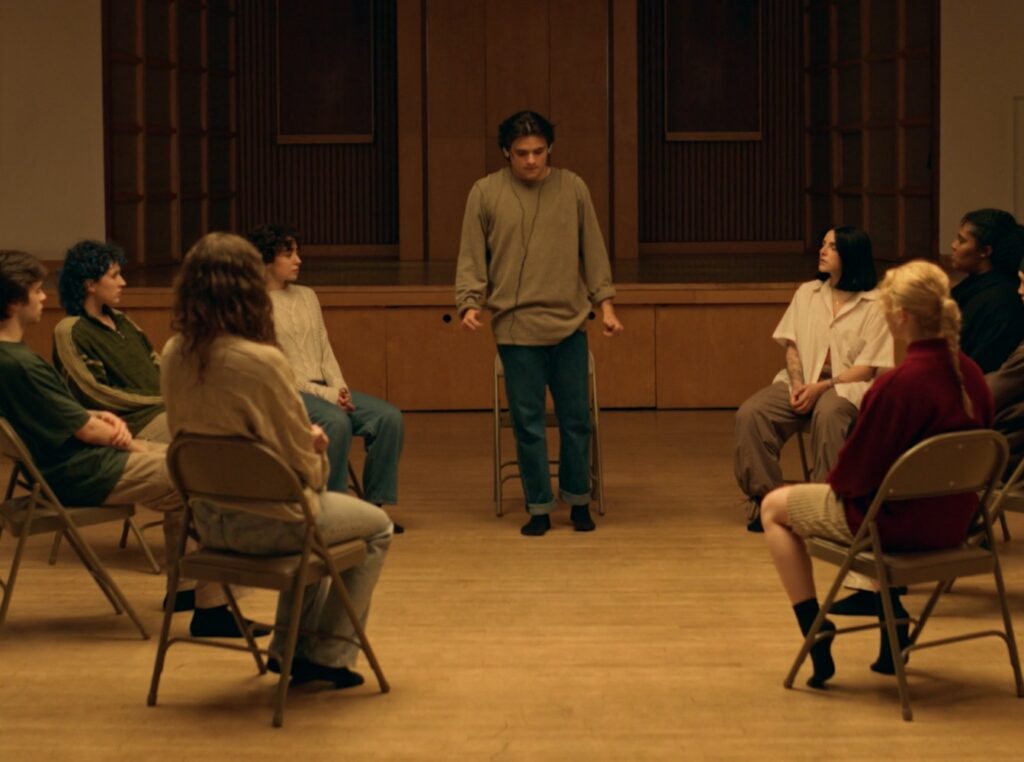
“Body Language” Directed and Choreographed by Madeline Petruzzelli – Still courtesy of LA Dance Film Festival.
Some of the films tackled similar topics like connection, loss, and memory. “Body Language,” Table for one, please,” and “Chambers Street” all looked at grief with unique perspectives. In “Body Language,” directed and choreographed by Madeline Petruzzelli, a man attends a support group where he is empowered to share through the language of dance. The film showed a visual journey of empathy – first we see the moderator repeat his movements back to him, and eventually the whole group dances with him, sharing in his grief and helping him work through his feelings. The movements, structure, and cinematography were on the simple side, and it felt more like the dance was accompanying the music rather than leading the narrative.
“Table for one, please” by Samantha Shay featured current and former dancers of Pina Bausch’s company and blended dance, pedestrian movement, theatricality, and spoken word in Bausch’s tanztheater style to explore the awkwardness of grief. Emotional outbursts were juxtaposed against the indifference of others. One actress literally ate cake as others writhed nearby, referring further to Marie Antoinette as she gestured the cake knife across her throat.
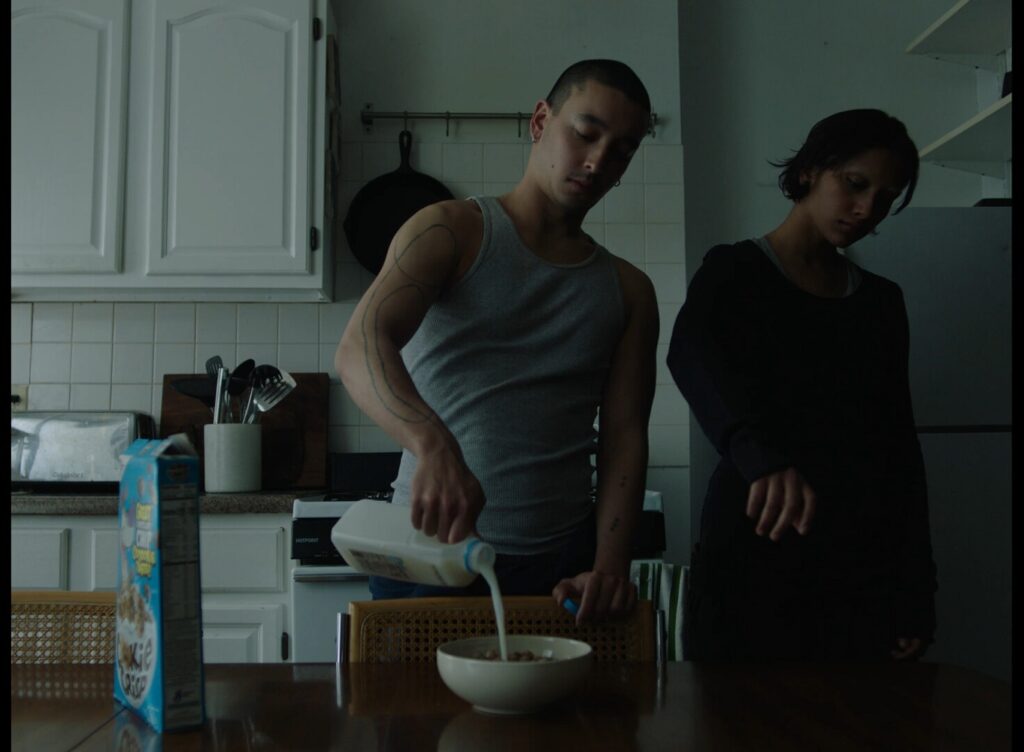
“Chambers Street”, Directed by Scott D. Keenan, Choreographed by Max Cookward – Still courtesy of LA Dance Film Festival.
“Chambers Street,” directed by Scott D. Keenan and choreographed by Max Cookward, shows a man shadowed by the ghost of his ex-girlfriend, who imitates his movements precisely as he gets ready for the day and moves through the streets of New York City. The piece culminated with a duet on a subway platform where the camera circled the pair. As the camera came around one last time, we saw the man alone, tossing and thrashing with more abandon. It made me wonder if he is moving this way because he feels alone or if his tossing movements were the only way to shake off this nagging memory.
Another film set in New York City was “Man in the City,” directed by Barbara Anastácio and featuring a powerful performance by Kristián Mensa. The footage was often intentionally blurred and tinted blue, bringing to life Mensa’s angst. Mensa seamlessly wove together acrobatics with staggering off-balance moments, and the dramatic piano score amplified his turmoil as he seemed to consider jumping from a roof before stumbling through the streets of the city.
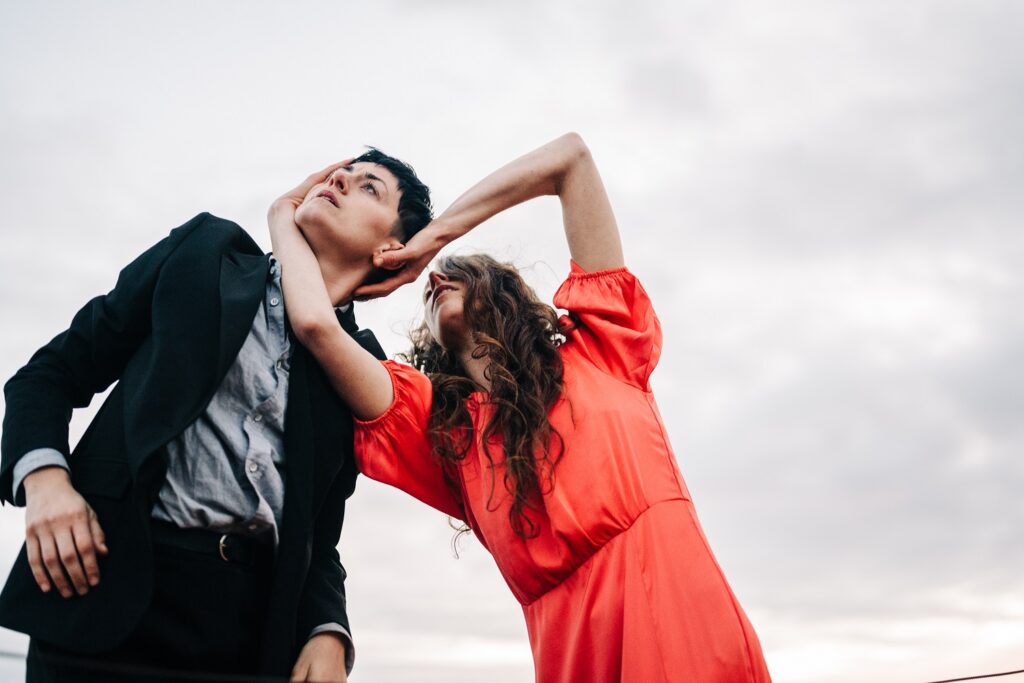
“If I Were You” created by Margot Gelber and Rebecca Goldstone – Still courtesy of LA Dance Film Festival.
“If I Were You,” created by Margot Gelber and Rebecca Goldstone, and “Naval Ode,” directed by Fu Le and choreographed by Magalie Lanriot & Roel Q Seeber, were duets that made use of distinctive settings. In “If I Were You,” a couple works through subtle conflict. I could feel their deep connection as they embraces and supported each other physically, but they both seemed to yearn for more and pull away at times. Set in an empty stone structure isolated in a hilly scape, their movements matched the soft wind that blew past them. “Naval Ode” also takes place in a stone structure and was inspired by a poem about the distance between a boat and the dock. We saw a couple attached to bungees bounce and float past each other, in what seemed like an empty elevator shaft. They would come together to embrace and spin before separating again in an otherworldly suspended dance. The camera often rotated and made me dizzy, almost like being on a boat, which may have been an intentional choice to disorient the viewer. Later, the camera stayed still and the dancers flew in and out of frame, with clips edited together so that the dancers would appear from new places for a cool effect.
I enjoyed the film “WELL!” which took us on the journey of two pals with excellent musicality and an endearing, childlike playfulness in the performance by the dancers. This film was directed and choreographed by Lu Zhang. The dancers had an awkward shyness at the start as we saw them connect, first copying each other, leaning on each other but then pushing their partner off, emulating the way kids might shy away from true connection and tease instead. Near the end of the piece, Zhang edited one dance phrase together over multiple locations, seeming to show the repetitive nature of children’s play: going to new places but doing the same things. The movement choices were simple but perfectly matched the music, bringing it to life and elevating the score while telling a story,
“WE” was another duet that took place in the more familiar setting of an alleyway in Venice, lined by pink bougainvillea flowers. This film was directed and choreographed by LA filmmaker Sarah Elgart. Instead of manipulating time, the camera was the steady eye witnessing two men first separately moving with their own unique isolations and undulations, before they met at a corner for a conversation of gestures.
One of my favorite offerings was “DWELLING,” created by LA locals Ashley Lindsey and Grady Bowman. Set in an apartment, the film utilized the format extremely well to manipulate time and space as it explored memory and the way a space can hold memories. In one part of the film, shot in a hall with two doorways, the dancers faded in and out of visibility as they moved fluidly, sometimes alone and sometimes together, in one of the two rooms. Their movements were sinewy and snakelike, and at times only their limbs were visible in the frame like waving tendrils. I loved a moment early in the film when the dancers crawled towards each, looking like they were about to kiss but just missing each other. I realized the filmmakers seemed to use the two dimensionality of the film format to trick the viewers’ eye.
Also shot in an apartment space, “A night in Napoli” was a cheeky and well-crafted single shot film created by Lucia Lopez Sanchez. The camera and dancers worked together to create various changing scenes, some scandalous, that would appear as the camera panned around the small space, telling the tale of a wild night. The dancers would sway wistfully, and the movements often had a tango-like feel. The styling of the film, with the dancers clad in red, black, and white, was strong, and the vision was brought to life with the foggy sepia tone of the footage, evoking sunlight creeping into the space as the morning light arrived.
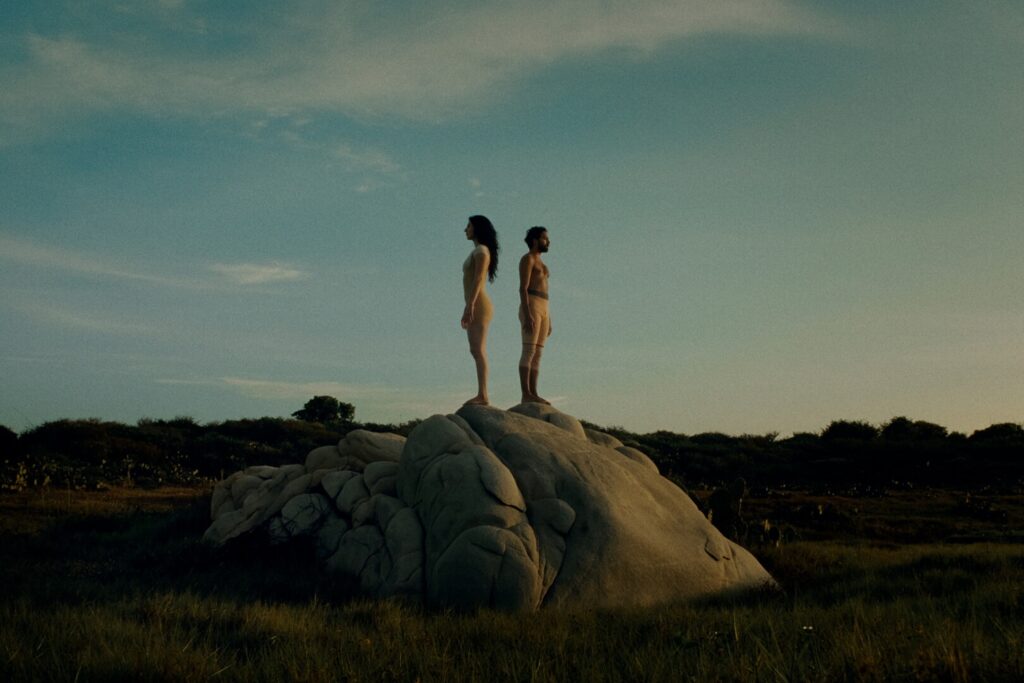
“Escape – To the middle of nowhere” Directed by Rebeca Becerra Cusi and choreographed by Cesar Brodermann and Miranda Garcia – Still courtesy of LA Dance Film Festival.
“Escape – To the middle of nowhere” was directed by Rebeca Becerra Cusi and choreographed by Cesar Brodermann and Miranda Garcia. The intention was to tell a story where a disgruntled woman was transported to an idyllic beach and healed through movement. There were nice shots of dancers moving in various spaces of a modern home, and I enjoyed the ending visual of the woman dancing freely in a sunset silhouette with a partner, but I didn’t quite feel the story that got us to this final moment.
More successful in its storytelling was “Corralling of Circles,” created by Siye Tao and Theo Qu, where we saw a solitary woman seem to go through the motions in a pottery studio. She seemed stuck and would pace and move circularly. As I was feeling that the pace was a bit slow for my taste, inspiration struck and she moved with intention, gesturing quickly and decisively, and the story of the artistic process came to life for me. The slow pace of the beginning was the perfect contrast to show how this process so often goes.
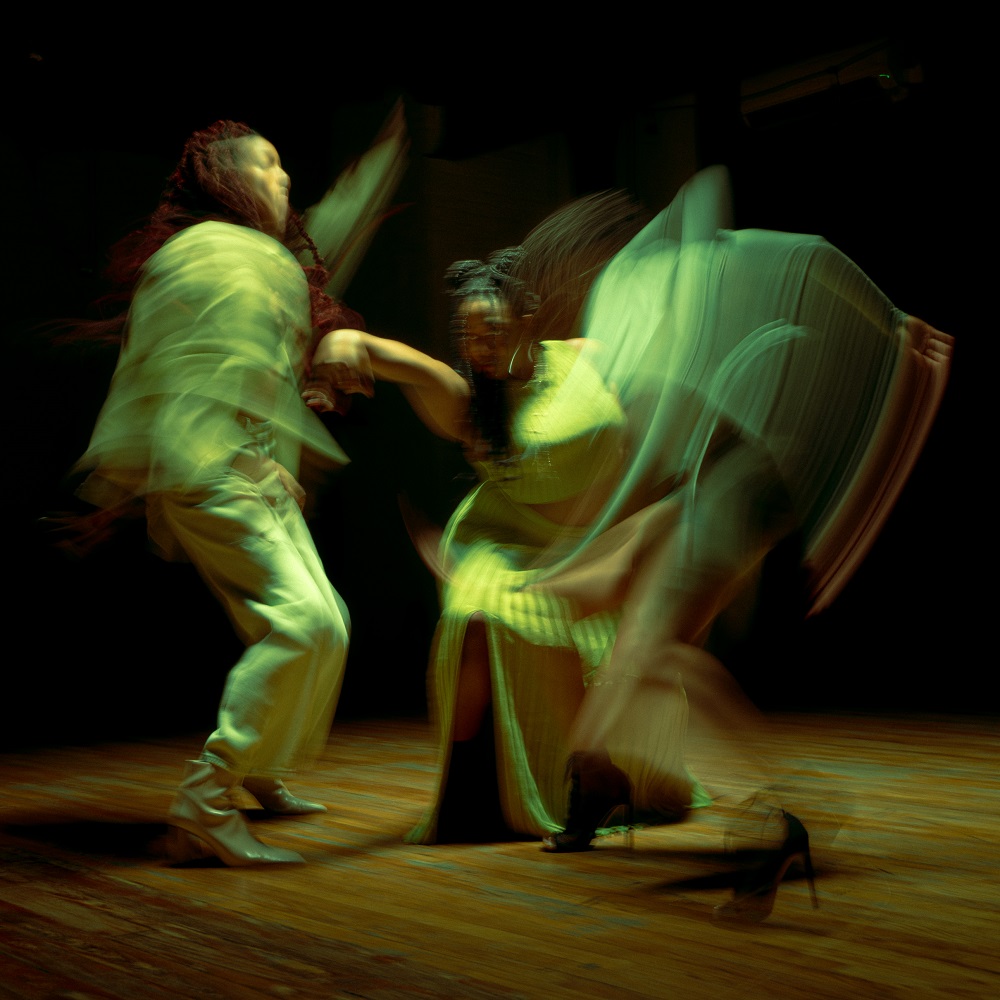
“Confluence” Directed by Travys Owen, Jermaine Browne, and Rickey Tripp, and choreographed by Browne and Tripp – Still courtesy of LA Dance Film Festival.
“Confluence” featured strong visual moments and swirls of color. The film was directed by Travys Owen, Jermaine Browne, and Rickey Tripp, and choreographed by Browne and Tripp, and sought to show off the breadth of black creativity. I enjoyed the extreme filtering, creating light flares and blurs of color, giving a different identity to different groups of dancers that appeared. The film was brief and the lack of credits made the ending unclear; I didn’t realize the film was over until the next film had started.
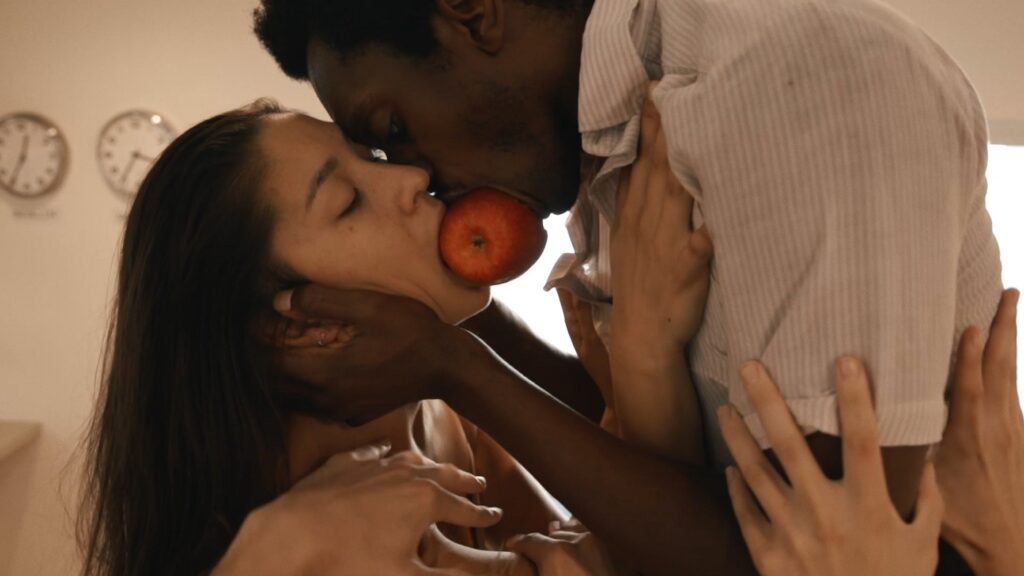
“Behind Closed Doors” directed by Lisa Eaton and choreographed by Eaton, Sabrina Phillip, Sara Silkin, Michelle Dawley, Deirdre Barnes, and Stephanie Kim – Still courtesy of LA Dance Film Festival.
The third film by an LA filmmaker, and the winner of the festival’s Creative Excellence Award and Audience Choice Award, was the masterful “Behind Closed Doors.” This film explored the hidden dynamics within a heterosexual family, with the husband and wife figures performed beautifully by Raymond Ejiofor and Stephanie Kim. The film took place throughout a home and was directed by Lisa Eaton and choreographed by Eaton, Sabrina Phillip, Sara Silkin, Michelle Dawley, Deirdre Barnes, and Stephanie Kim. The movement and storytelling in this film were strong, and the dancing used the various spaces within the house creatively. A fun pool scene to Queen’s “Under Pressure,” using underwater and aerial shots, brought levity to the middle of the profound exploration of sexual identity of the husband figure. The film didn’t forget about the repercussions of his awakening on his wife. I enjoyed seeing her find community with her female friends who literally lifted her up in one moment.
This evening, curated by Executive Director Nicole Spring, showed the range of how dance and film can come together to create dance films. The camera can manipulate time and space through editing, or the dancers can surprise and trick the eye as they rearrange out of frame. The camera can move and dance, sway like the wind, or simply witness, and I enjoyed the chance to witness this powerful assortment of films.
To learn more about the LA Dance Film Festival, please visit their website.
Written by Rachel Turner for LA Dance Chronicle.
Featured image: “DWELLING” Created by Ashley Lindsey and Grady Bowman – Still courtesy of LA Dance Film Festival.

